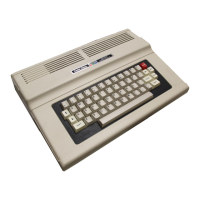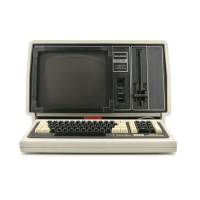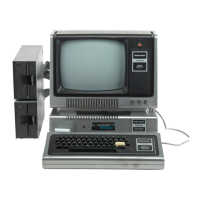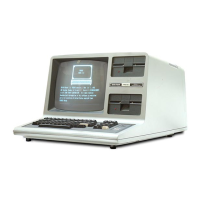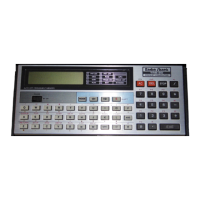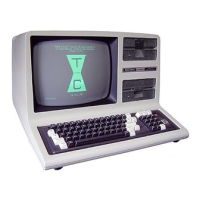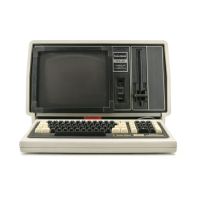Cassette
Problems
Most
of
the
difficulties
you'll
find
in this section
will
be
related
to
no
recorder
motor
control.
Usually,
Kl
(a
reed
relay)
will
have
gone bad
because
of
overwork.
Relay damage
is
particularly
susceptible in Level
II
units.
That
buzz you hear every
time
you
power up a Level
II
unit
is
the relay going bana-
nas
during the CPU's lengthy
initialization
routine. The power-up routine and the added
recorder
usage,
because
of
more
efficient
file
storage routines, make
K1
earn its living.
The contacts could remain closed due
to
con-
tamination,
or
the relay coil could open
or
short. The relay
is
easily replaced,
but
watch
out
for
Murphy's
law.
It
is
very
easy
to
install
K1 on the Board backwards.
Be
sure you match
the
index mark on the Relay
with
the silk-screen
mark on the
PCB
(when backwards, Z41, pin 3
sees
a short
to
VCC.
It
tends
to
make Z41 get
hot
- fast). Damage
to
Z41's relay side
will
probably
kill
the video side. Suspect a shorted
relay (or shorted diode, CR3)
if
the display
slowly
dims and fades away.
If
you suspect
K1
is
stuck,
thump
the relay
body
with
your
finger.
That
should free the con-
tacts, and the recorder
will
stop.
Don't
pat you
r-
self on the back
for
a
job
well done, however,
until
you replace
that
Relay.
It
may stick again
on the
next
CLOAD
instruction. Replace K1
and
save
yourself some grief later on.
Cassette
Audio Processing
If
you
think
you
are
having a cassette audio
processing problem, you
can
check
for
activity
at
Z4, pin 10.
Try
loading a long program
into
the Computer while
monitoring
pin 10.
It
should
be
normally
high, and
go
low
on the
audio pulses.
So
long
as
the pin
is
active and
there
are
at least
two
pulses
each
bit
time,
you
should
be
OK
in giving
Z4
a clean bill
of
health.
But, beware
of
a
normally
low
signal at pin 10
of
Z4!
If
you
have
active rectifier
or
level
detector problems, pin
10
of
Z4
can
operate
backwards.The
output
will
be
normally
low
and
go
high on tone pulses
from
the tape. The prob-
lem
is
usually associated
with
a shorted diode
(CR4
or
CR5),
or
the level detector may
not
have charged up capacitor C39 due
to
a failure
of
CR6, CR7
or
C39. Consult the
theory
section
for
waveforms and operation
of
this
circuit.
If
you
are
getting good data
to
set-reset
flip-flop
Z24
during a
CLOAD
fault,
you may
have
a
digital problem.
Try
to
CLOAD
a long program
(like Blackjack) and
see
if
Z24, pin 8
is
active.
Also check
activity
at Z44, pin 15.
You'd
better
hope one
of
these signals
is
not
right,
or
you've
got
a long day ahead
of
you.
During a
CLOAD,
OUT*
resets
flip-flop
Z24.
If
Z24
stays set, suspect Z25, pin 8's gate -
or
follow
OUT*
back
to
its source.
If
I
NSIG*
is
messed
up, examine Z25, pin 6 and
follow
IN*
back
to
its source.
If
both
of
these signals
look
strange, check
out
port
decoder Z54, Z52 and
Z36, which combine
to
form
FF*.
If
all signals and
Z44
look
OK,
suspect a RAM,
CPU
or
ROM problem in
that
order.
It
would
pay
if
you
are
familiar
with
the
timing
of
INSIG*
and
OUTSIG*
in a
CLOAD
condition
using a
known
good TRS-80.
It
would
definitely
help you in Section Isolation
if
you
find
your-
self considering a ROM, RAM
or
CPU
defect.
73
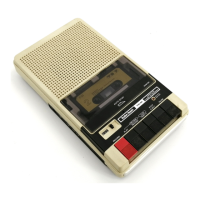
